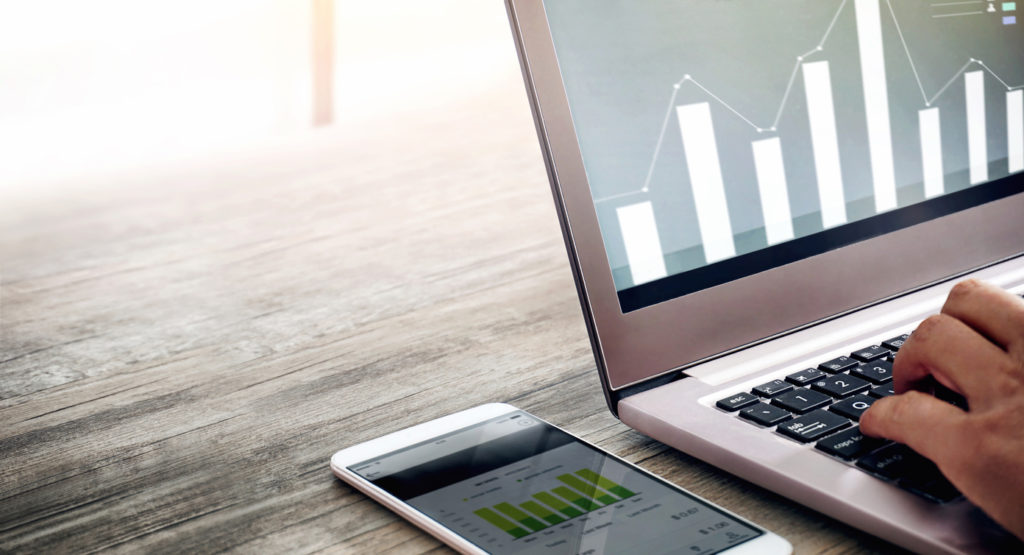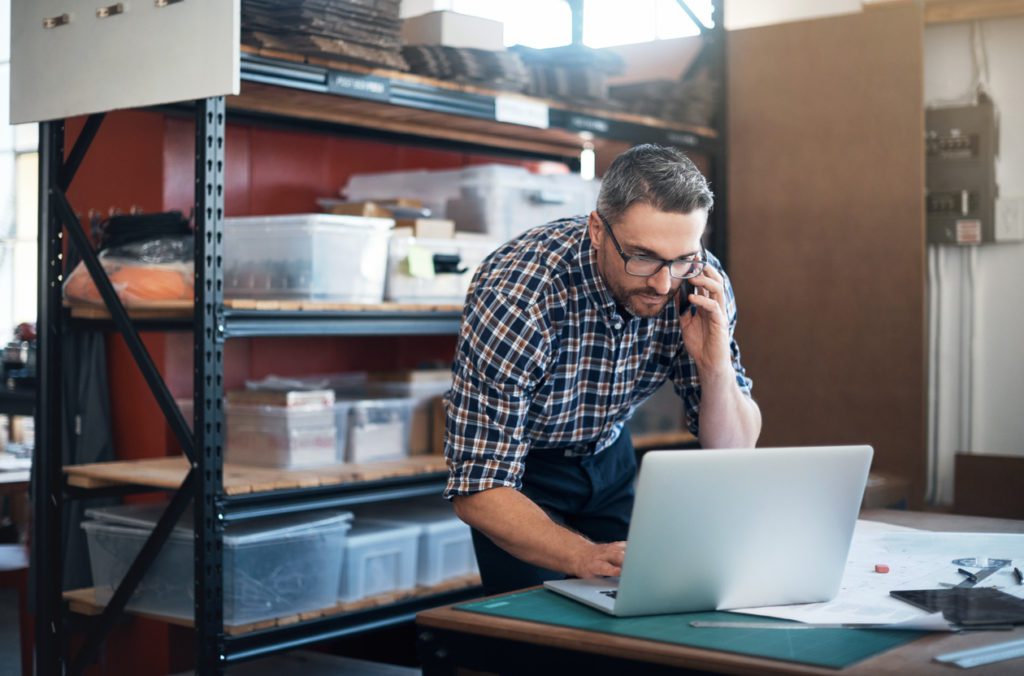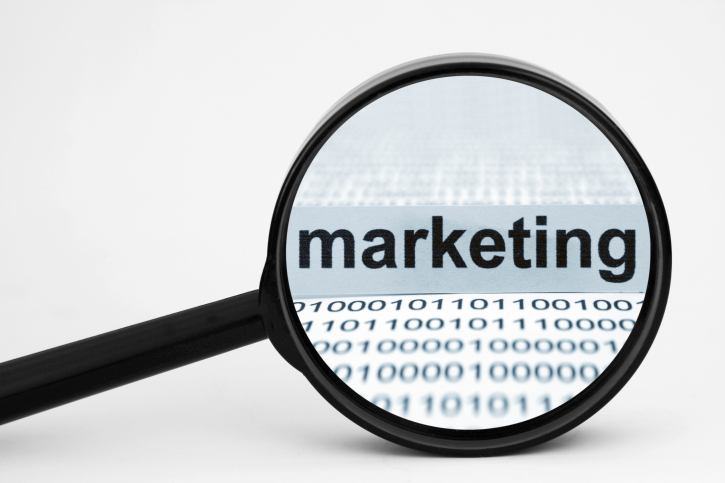How Beacon Technology is Revolutionizing Business and Marketing
Can a device as small as a postage stamp change the way you do business? Beacon technology increases efficiency and boosts customer experiences. Moreover, the versatility of proximity beacons is well-suited for many business sectors, including hospitality, retail, education, manufacturing, and healthcare.
From marketing to inventory, Bluetooth low energy (BLE) sensors help leaders transform how they do business at remarkable rates. Learn how this technology supports business goals and benefits your business while exploring beacon technology examples and use cases.
What is Beacon Technology, and Why Does it Matter?
Beacon technology transmits data to mobile applications using Bluetooth low energy signals. Proximity devices can range in size, shape, and color. Many are as small as a postage stamp with only three components (battery, radio, and central processing unit), allowing business owners to place them in precise locations.
The battery-powered devices broadcast outbound signals, based on location, to mobile applications on smartphones or wearable technologies. Business owners use proximity-based services to track assets, market to customers, and improve operational efficiency.
Apple’s iBeacon initially dominated the market, making its debut at the 2013 World Wide Developer Conference. In 2015 Google introduced Eddystone. Today, Research Dive predicts that the global beacon technology market will “garner a revenue of $45,213.7 million by 2026, at a compound annual growth rate (CAGR) of 75.4% during 2018 to 2026.”
The technology is relatively inexpensive compared to a global positioning system (GPS) or radio-frequency identification (RFID) deployment, making it a reasonable option for companies of all sizes.
Industries Using Location-Based Mobile Technology
The flexibility in beacon device types and deployment methods serves nearly every kind of business. Location-based services (LBS) and versatile beacons support leaders in industries, such as:
- Healthcare
- Automotive
- Real estate
- Logistics
- Retail
- Transportation
- Travel and hospitality
- Education
- Sports
- Politics
High-Growth Beacon Technology Sub-Segments
Although proximity marketing and inventory management are two top areas used by small to medium business owners, several sub-segments demonstrate a rapid growth rate. Sub-sectors with the largest growth potential include:
- Cloud: Cloud-based beacons help companies oversee multiple cloud-hosted services used on smart devices. They reduce costs while providing infrastructure security.
- Education: BLE beacon technology supports interactive learning zones, easy attendance taking, access to text information, and seamless communication.
- Wi-Fi: Beacon hardware combined with Wi-Fi-based sensors helps customers find their destination and lowers infrastructure costs for enterprises.
4 Ways Beacon Technology Benefits Your Business
Location-based mobile technologies provide many advantages to business owners and customers. Shopper-orientated retail technology can support your goals for increased efficiency and cost savings while enhancing customer experiences resulting in higher sales.
1. BLE Technology Improves Efficiency
By nature, beacon technology is more energy-efficient than similar technologies. But it also boosts efficiencies in inventory and asset management. Internet of things (IoT) beacons turns items into self-broadcasting tools, allowing more accurate inventory counting and order fulfillment.
Embedded sensors gather data about each step of the process, helping manufacturers develop crucial insights required for informed decision-making. The deployment is scalable, letting business owners oversee:
- Vehicle monitoring
- Transport management
- Theft detection
- Logistics tracking
- Equipment monitoring
2. Proximity Beacons Enhance Customer Experiences
Beacons improve the shopping experience by providing money-savings, convenience, inspiration, and personalization. With targeted ads and brand offers, you can add value while increasing trust. Proximity sensors combined with third-party beacon applications provide:
- In-store product finding and navigation
- Seamless click-and-collect process for online orders
- Extra time savings while shopping
- Product alternatives for out-of-stock items
- Personalized promotions, based on preferences or purchase history
- Product information
- Advertisements or information based on a shopping list or shopping purpose
- Product recommendations
- Gamification via theme-based games
3. Bluetooth Beacon Technology Delivers Insights
Data is gold. But not often easy for small business owners to collect or leverage. With Bluetooth beacons and business intelligence as a service (BiaaS) platform, such as Retail Aware, you can gather information and measure behavior in real-time.
Take data about how customers move through your store or section dwell times and use it to improve layouts, promotional displays, and future marketing campaigns. Integrations with your customer relationship management (CRM), loyalty programs, and content management systems (CMS) make it easier to tailor promotions to the customer journey.
4. Smart Retailing Increases Revenue
By creating efficient workflows and tailoring communications, you save money while delighting shoppers. Data insights help you personalize promotions based on shopper profiles and preferences. In doing so, beacon technology can increase:
- Foot traffic through your doors and time spent in-store
- Revenue from point-of-purchase (POP) displays and branded merchandising
- Effectiveness of retargeting advertising efforts
- Repeat sales and loyalty reward purchases
Beacon Technology: Examples and Use Cases
Business owners deploy beacons across many industries. From Target to Walmart, major retailers use location-based technology to improve operations, market to customers, and improve shopper and employee experiences. Explore ways entrepreneurs use technology and data to meet goals.
Personalized Marketing Experiences
Connect your sensors to third-party applications, such as ShopKick or RetailMeNot, and trigger an experience when a shopper comes before a particular display or store section. You can send a:
- Coupon
- Video
- Website link
- Promotion
- Loyalty sign-up form
Learn About Your Customers
Smart beacons and third-party applications help you build comprehensive profiles about how consumers research, find, and shop for products. With a tool such as KnowYourShopper™ by Retail Aware, you can gain intelligence about consumers and use it for retargeting shoppers or creating lookalike audiences. It allows you to develop profiles with data such as:
- Age
- Income
- Operating system
- Gender
- Phone type
- Ethnicity
- Mobile advertising IDs (MAIDs)
Google Ad Improvements
It can be challenging to understand how your customer’s offline activity links to online marketing or retail store visits. However, by connecting your beacons to your Google Ads account, you can see how user interaction with digital ads matches offline behavior.
For example, a consumer may search for a product from their mobile device, see your Google search ad, and click on it. If they later stop by your store, the beacon will note that the shopper clicked on your ad and attributes a store visit to your Google Ads account.
Encourage Efficient Operations
Facilities maintenance services use beacons to keep buildings clean. They place beacons in places, such as restrooms. The sensors track when custodians come near or into a bathroom. Data about arrival and dwell times get sent to supervisors allowing them to monitor frequency and time spent cleaning the various restrooms.
Enhance Out-of-Store Marketing
Similar to geofencing, proximity marketing lets you ping people outside of your store. By combining purposeful promotions and personalization, you can increase and monetize foot traffic. Consider sending:
- An alert telling consumers your doors are open
- A message about a discount
- Extra loyalty reward points for a visit
- Information about a deal on a previously purchased product
Provide Contactless Experiences
Beacon technology can support your digital transformation and help you offer contactless or curbside deliveries without adding costly infrastructure. Once a customer places an online order, they can schedule a pick-up time and location.
Your sensor will alert your staff once your customer arrives, giving you time to place purchased products in an outdoor or waiting room locker. Or run the item out for curbside delivery.
Improve Accuracy in Your Google My Business Listing
Your Google My Business (GMB) listing affects sales, credibility, and local search engine optimization (SEO) efforts. Place a beacon in your store and use it to:
- Generate customer reviews
- Ask users to upload a photo
- Collect check-in data
- Share popular visiting times
Beacon Technology: Leveraging Human Mobility Data
As retailers and manufacturers race to meet digital transformation goals, beacon technology can clear the path for simpler and more effective data collection. By partnering with business intelligence providers and third-party consumer applications, companies deliver satisfying experiences and enable data-driven decision-making.
- 5 Reasons Why Cloud Solutions are Essential for Small Business - February 4, 2024
- How to Migrate Your Business to the Cloud in 7 Steps - June 16, 2021
- How Beacon Technology is Revolutionizing Business and Marketing - March 18, 2021


